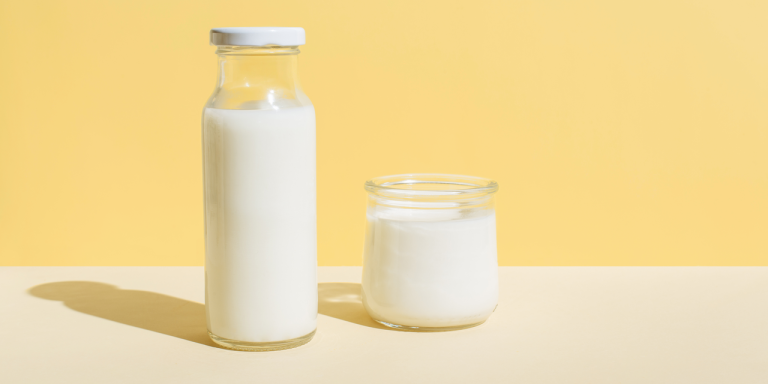
The question of whether raw milk is safe to drink might be just as polarizing as the “Is a hot dog a sandwich?” discussion. But it’s way more serious: There’s a whole lot more at stake when you’re gulping down a glass of unpasteurized dairy than smashing a footlong.
Just last month, for example, an outbreak linked to raw milk sickened a group of children in Minnesota. And last summer, another one in Tennessee led to the hospitalization of two infants. Despite these reports, interest in raw milk is growing. Supporters claim that its purported benefits—like “boosting” immunity or offering more nutrients than pasteurized milk—outweigh its potential risks. Still, the legal picture remains murky. To date, the sale of unpasteurized dairy is allowed in 30 states, but prohibited in the other 20, according to the US Food and Drug Administration (FDA).
So what’s the real deal behind raw milk? SELF connected with a few food safety experts to get all of your questions answered. Here’s what you should know.
First, let’s take a look at what “raw milk” really means.
Simply put, raw milk is unpasteurized; it hasn’t been heat-treated for a specific period of time to eliminate harmful pathogens that might be in it, Nicole Martin, PhD, an assistant research professor in dairy foods microbiology at Cornell University, tells SELF. That means the drink doesn’t undergo the processing necessary to help prevent foodborne illnesses (more on those later).
In 1987, the FDA mandated that milk sold in the US must get heat treated, John Lucey, PhD, the director of the Center for Dairy Research at the University of Wisconsin-Madison, tells SELF. That means that the products you see on grocery store shelves have been pasteurized, so they’re less likely to get you sick, according to the Centers for Disease Control and Prevention (CDC).
Despite what raw milk fans may believe, the pasteurization process doesn’t mess with the nutritional makeup of the beverage. It doesn’t change the concentration of protein or minerals in the drink, according to a 2015 review published in Nutrition Today. What’s more, evidence for immune-boosting effects just isn’t there, either. Raw milk doesn’t pack enough antibodies—proteins that help build up your body’s defenses against illness—to make a difference health-wise, according to the FDA. “Ultimately, we haven’t seen any [overall] proven benefit from consuming raw milk,” Dr. Lucey says.
So what are the health risks of drinking raw milk?
According to a 2022 study conducted by the CDC, there have been 202 raw milk-related illness outbreaks from 1998 to 2018 (the most recent data available).
That may not seem like that high of a number, but if you compare the likelihood of getting sick from pasteurized milk compared to the raw stuff, a pretty clear discrepancy emerges, Dr. Martin says. While unpasteurized products make up a minuscule percentage (less than an estimated 1%) of total dairy consumption in the US, they account for 60% of all dairy-associated outbreaks, according to a 2012 review in Emerging Infectious Diseases. And you’re 840 times more likely to get ill if you consume raw milk products compared to the pasteurized stuff, according to separate research from the CDC.